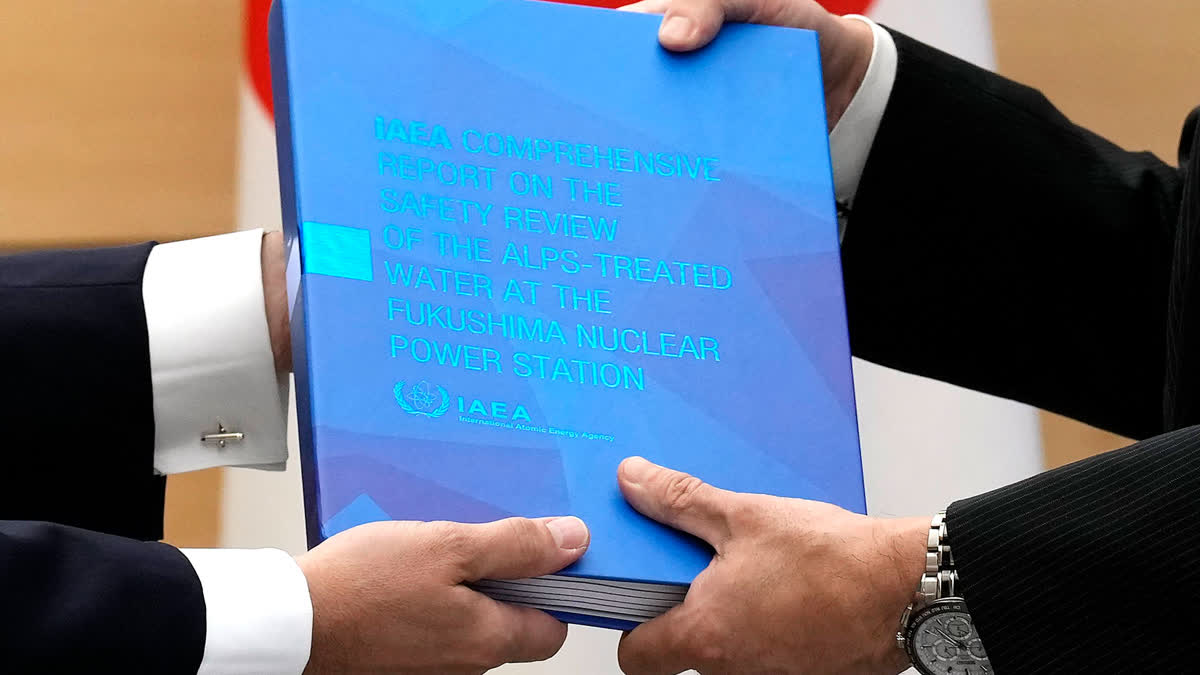TOKYO:The U.N. nuclear chief is to visit Japan's tsunami-wrecked nuclear power plant Wednesday after the agency affirmed the safety of a contentious plan to release treated radioactive water into the sea. On his way to the Fukushima Daiichi plant, a highlight of his four-day Japan visit, International Atomic Energy Agency chief Rafael Mariano Grossi will join government and utility officials to hear the concerns of mayors and fishing association leaders and to assure them of the plan's safety.
The IAEA, in its final report released Tuesday, concluded the plan to release the wastewater — which would be significantly diluted but still have some radioactivity — meets international standards and its environmental and health impact would be negligible. But local fishing organizations have rejected the plan because they worry that their reputation will be damaged even if their catch isn't contaminated. It is also opposed by groups in South Korea, China and some Pacific Island nations due to safety concerns and political reasons.
Fukushima's fisheries association on June 30 adopted a resolution saying their rejection to the treated water discharge plan remains unchanged. Grossi told a news conference Tuesday that the IAEA will continue to monitor and assess the release of the water, which will be done over decades. "I believe in transparency, I believe in open dialogue and I believe in the validity of the exercise we are carrying out," he said.
Also read-UN nuclear chief is visiting Japan to give a final report on release of treated radioactive water
The report is a "comprehensive, neutral, objective, scientifically sound evaluation," Grossi said. "We are very confident about it." A massive earthquake and tsunami on March 11, 2011, destroyed the Fukushima Daiichi plant's cooling systems, causing three reactors to melt and contaminating their cooling water, which has leaked continuously. The water is collected, treated and stored in about 1,000 tanks, which will reach their capacity in early 2024. The government and the plant operator Tokyo Electric Power Company Holdings say the water must be removed to prevent any accidental leaks and make room for the plant's decommissioning.
